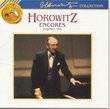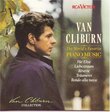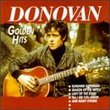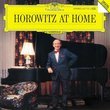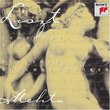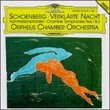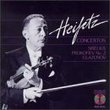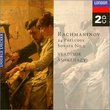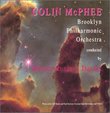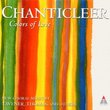| All Artists: George Rochberg, Christopher Lyndon-Gee, Saarbrucken Radio Symphony Orchestra Title: George Rochberg: Symphony No. 2; Imago Mundi Members Wishing: 0 Total Copies: 0 Label: Naxos American Original Release Date: 1/1/2005 Re-Release Date: 9/20/2005 Genre: Classical Styles: Historical Periods, Modern, 20th, & 21st Century, Symphonies Number of Discs: 1 SwapaCD Credits: 1 UPC: 636943918227 |
Search - George Rochberg, Christopher Lyndon-Gee, Saarbrucken Radio Symphony Orchestra :: George Rochberg: Symphony No. 2; Imago Mundi
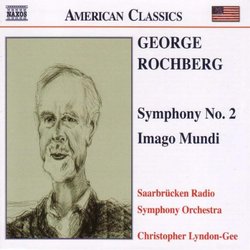 | George Rochberg, Christopher Lyndon-Gee, Saarbrucken Radio Symphony Orchestra George Rochberg: Symphony No. 2; Imago Mundi Genre: Classical
|
Larger Image |
CD DetailsSimilarly Requested CDs
|
CD ReviewsRochberg's Serialism Robin Friedman | Washington, D.C. United States | 11/12/2005 (5 out of 5 stars) "This is the fourth CD devoted to the music of the late George Rochberg (1918 -- 2005) on the Naxos "American Classics" series. It is also the first of the Naxos releases to include a work from Rochberg's early period as a twelve-tone serialist composer, the "Symphony no. 2" composed in 1955-1956. In the early 1960's, Rochberg abandoned serialism -- or more accurately modified it by combining it with a tonal language and romantic idiom. The earlier releases on the American classics series, including Rochberg's violin concerto, Symphony no. 5, and a collection of short orchestral works, are all from Rochberg's post-serial period. Two of these earlier CDs feature Christopher Lyndon-Gee conducting the Saarbrucken Radio Symphony Orchestra, as does this recording of the Symphony no. 2.
Rochberg made his early reputation as a serialist, following service in WW II, where he was severly wounded, and study in Italy with Luigi Dallapicola (1904 -- 1975) His masterpiece in the serialist form is the Symphony no. 2 which consists of four movements together with a coda, all played as an interconnected whole. George Szell was an early champion of this score, and conducted in with the Cleveland Orchestra in Cleveland in 1959 and in New York in 1961. The music is angular and its tone is alternately angry and elegaic, as the composer lamented the tragedy of WW II and the deterioration and emptiness it brought in its wake. Many people continue to view serialism as a cold, intellectual compositional technique, but this was never Rochberg. The second symphony reminds me more of Alban Berg than of Schoenberg or Webern as Rochberg combines strict discipline with music of immediate emotion and anguish. The first movement of the symphony is marked "declamando" and opens with a sharp, arresting stacatto phrase. As elsewhere in his music, Rochberg is an imaginative orchestrator, with drums, cymbols, calls to alarm in the brass, dramatic use of the winds, and some quiet themes in the strings. This is a voice full of pain. The second movement is a scherzo which includes a rat-a-tat theme that seems to signify guns on the firing line. It is rhythmical and continues the arresting, angry nature of the opening movement. The third movement is slow, quiet and searching. It is highly reflective with passages for solo flute, clarinet, and violin, and clashing cymbols with ultimately lead to a large climax. The fourth movement returns to the sharpness and tension of the opening and features a large brass chorale. The short coda begins with a growling in the cello and bass and an elegaic, hanging close. Even though Rochberg soon repudiated the serialism of this work, I found it moving. I think there is a great deal of emotional and compositional continuity between it and the works that followed in Rochberg's career. This CD also includes a world premier recording of Rochberg's "Imago Mundi" which dates from 1974, following the composer's visit to Japan. It is valuable to compare this work with the austure Second symphony and with the other Rochberg composition in the "American Classics" series, none of which are like "Imago Mundi." It is modeled after a Japanese form of court music known as Gagaku and on Japanese Noh theatre. I found the organization the most striking feature of the work. It is composed in a single movement consisting of relatively short, separate segments, almost sentences, each of which largely develops a single musical idea. Most of the segments are slow in tempo, with several having march themes with heavy use of percussion. The orchestration again is lavish. Rochberg attempted to capture in this work, a conception of time that differs from that in the West. The music is rather static and non-developmental with one chain of sound simply following another. Oddly enough, it took me longer to get accustomed to the language of "Imago Mundi" than to respond to the Second Symphony. With the continuing releases in the "American Classics" series, Naxos is making Rochberg's music accessible to a wide audience. I think Rochberg will be remembered as one of the major American composers of the Twentieth Century, and I am thankful for the opportunity to explore his work on these CDs. Those interested in reading about Rochberg's decision to turn away from serialism to his "hard romantic" music, might enjoy an article by Michael Linton, "George Rochberg's Revolution," published in the magazine "First Things" in 1998 and accessible on the web. Robin Friedman" |

 Track Listings (6) - Disc #1
Track Listings (6) - Disc #1